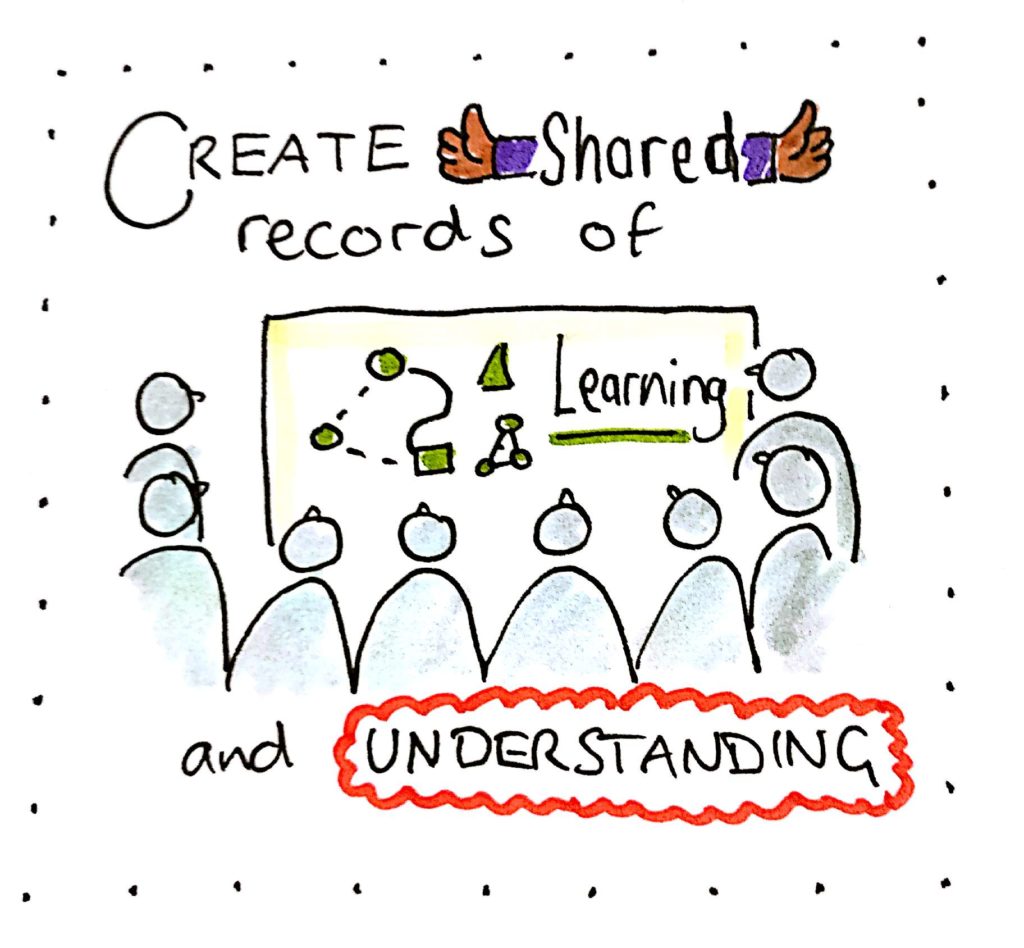by Dan Woodward
How can we turn the lessons learned from tyranny of the classroom into an adult learning experience? Let’s look at Mindful Learning.
I was a bit of a swot [British for smartypants] at school, but for me understanding the detail of subjects was often quite hard work. I got the concepts easily, but the retention aspect was difficult. The subjects I remember best combined verbal and visual elements. They weren’t even the subjects I attained the highest grades in!
But the practical outcome shows that I learned more from those teachers.
How many of you have stories of being in class, and the teacher coming down hard on you or a classmate? You were “not paying attention”, “daydreaming”, or “doodling absent-mindedly”? I expect quite a few.
Mindful Learning
Drawing doodles, fiddling, gesticulating, and not being able to sit still. They all have significant stigma in our classrooms and boardrooms. The frustrating thing is, the people who do these things are being held back.
These activities are the brain’s way of keeping and processing information effectively. When we engage our body, it frees up our subconscious mind to solve, innovate and learn.

What does Mindful Learning mean?
It causes our conscious brain to be present, in the moment. Aware of what is going on without unnecessary distraction. In fact, you are paying more attention to the matter at hand, even if it doesn’t seem like it.
There are different ways that people engage this innate superpower.
We know about kinesthetic learning — learning by physical repetition. There is also the notion that movement allows you to focus and solve problems. Steve Jobs took people on long walks when faced with solving difficult problems. He also moved about a lot when explaining his concepts and strategies.
When I am on a phone call that requires my concentration, I have a physical need to get up and walk around. This allows me to focus on the topic at hand. There have been many times my wife has found me wandering around the house. She worries I am talking to myself, only to find me on the phone!
Music is another option. Albert Einstein struggled with difficult challenges. He would find refuge in strumming his violin, playing around with melodies. This in turn allowed his subconscious to improvise innovative perspectives.
Other people are able to directly engage their brain in problem solving. Some (like Nikola Tesla) can do this instinctively, others can find this harder. This is where mindfulness meditation can help us.
Mindfulness teaches us how to focus the mind into the present. To observe and be curious about the thoughts that float in and out of our head, without being consumed by them.
Then of course there is visual literacy. In its simplest form, it allows your subconscious mind to process what you hear, see and think. Practice lets you use images and metaphors to record, interpret and organize information.
In all these approaches, we allow our subconscious to have space. It can then help us be focussed, productive and innovative. This has massive implications in the world of work:
- see the bigger picture
- create and adapt strategies
- make meetings focussed, participative and productive
- create shared records of learning and understanding
Co-created learning is the most effective approach for solving complex problems. I hope you see the potential for these approaches to support and enhance your learning.
There are three kinds of men. The one that learns by reading. The few who learn by observation. The rest of them have to pee on the electric fence to see for themselves.
Will Rogers
Your Co-Created Learning Exercise on Mindful Learning
I want you to try this easy exercise:
- Work out how you are naturally inclined to be mindful. Do you need to walk, gesticulate, close your eyes? Do you need to make marks on paper — do you use words, pictures, faces, or abstract shapes?
- When will you next go into a situation that needs your concentration? Visualize how you will act mindfully. It may be a conference call, meeting, team retrospective or workshop. It doesn’t really matter.
- Try out your technique. Keeping your conscious mind in the present. Be aware what is going on. Let your subconscious soak up the knowledge which is floating in the air around you.
- Note down your thoughts and observations about the activity. Reflect on how useful it was — was it more useful than normal?
Read on:
Header Image: jeshoots (Unsplash)

